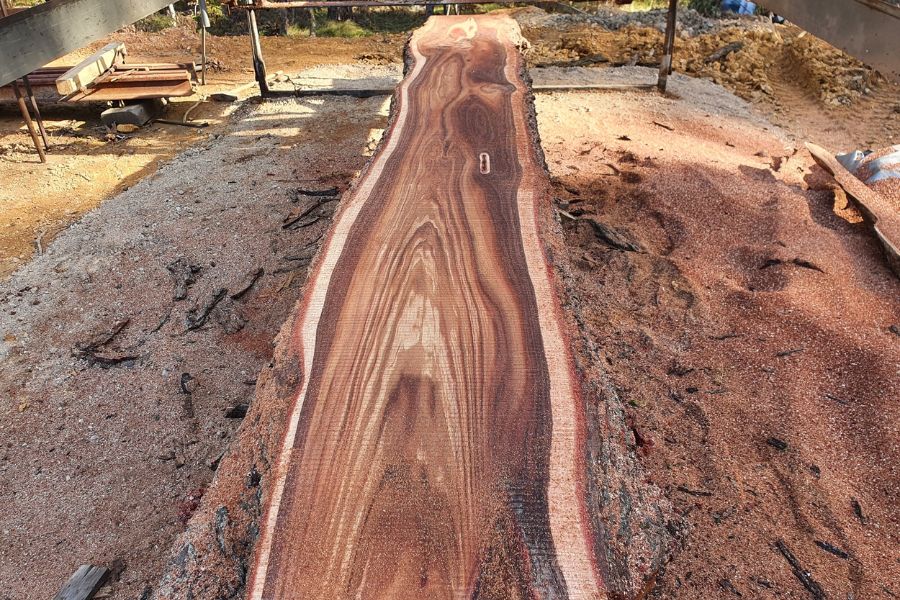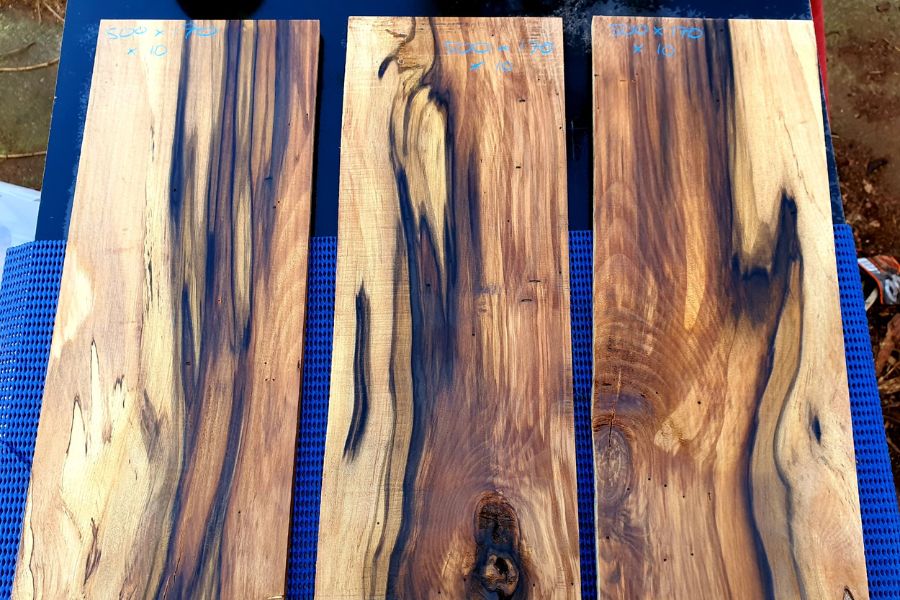Introduction
Australian Buloke wood, derived from the Allocasuarina luehmannii tree, has become one of the most talked-about hardwoods in the global timber market. Renowned for being the densest wood on Earth, it boasts an exceptional hardness and durability that make it highly sought-after. Unsurprisingly, the Australian Buloke wood price reflects both its rarity and its exceptional quality, sparking increased curiosity from woodworkers, designers, and investors alike.
What Makes Australian Buloke Wood Unique?

Buloke is not your average hardwood. Found mostly in southeastern Australia, it has a Janka hardness rating of approximately 5,060 lbf, making it significantly denser than teak, oak, or even hickory. This remarkable strength contributes directly to the high Australian Buloke wood price, as it’s not only rare but also incredibly difficult to harvest and process due to its density.
Environmental Conditions and Growth Patterns
Australian Buloke trees grow slowly in semi-arid climates, often in woodlands or grasslands. Their slow growth contributes to their hardness and durability. Because it can take decades—if not centuries—for these trees to mature fully, the supply is limited. This limited growth rate plays a major role in driving up the Australian Buloke wood price, especially as demand increases for sustainable, high-performance timber.
Traditional and Modern Uses of Buloke Wood
Historically, Buloke wood was used in farming tools and fence posts because of its incredible resistance to wear. Today, it finds use in luxury flooring, decorative furniture, specialty tool handles, and custom knife scales. These applications continue to raise the Australian Buloke wood price, particularly in markets where performance and aesthetics are both essential.
Processing Difficulties and Their Cost Impact
Buloke is notoriously difficult to process, nail, or saw because of its exceptional hardness. Specialized tools and significant labor are needed to process it properly, which adds a considerable markup to the Australian Buloke wood price. This cost doesn’t just reflect the wood itself but also the expertise and time required to work with it efficiently.
International Demand and Global Trade
As awareness of Australian Buloke’s exceptional qualities spreads beyond Australia, international buyers have begun importing the wood for high-end products. This rising demand, coupled with limited supply, has a dramatic influence on the Australian Buloke wood price. Countries with thriving luxury goods industries, such as Japan, the United States, and Germany, are particularly interested in importing it.
Legal and Environmental Considerations
Because Buloke trees are native to Australia and often found in conservation areas, strict environmental regulations govern their harvesting. Permits, sustainable practices, and limited logging quotas all factor into the final Australian Buloke wood price. These regulatory controls help preserve the ecosystem but also restrict supply, contributing to price increases.
Comparing Buloke to Other Hardwoods
When compared with other popular hardwoods like mahogany, walnut, or ebony, Buloke stands out for its density and longevity. While it may be more expensive per cubic meter, many consider the Australian Buloke wood price to be justified due to its unmatched performance in applications where strength and resistance are critical.
Investment Potential of Rare Woods
As exotic woods become harder to source, some investors view them as long-term assets. Collectors and builders are increasingly turning to unique species like Buloke for exclusive builds or limited-edition product lines. With supply dwindling and global interest growing, the Australian Buloke wood price may continue to rise, making it an intriguing option for material-based investment portfolios.
The Role of Sustainable Forestry
In response to environmental concerns, sustainable forestry initiatives are working to balance ecological preservation with commercial interests. Ethical harvesting and responsible sourcing play a key role in shaping the Australian Buloke wood price, as consumers and governments demand transparency and sustainability in the timber supply chain.
Market Trends and Forecasts
Market analysts predict that hardwood prices will continue to rise, especially for rare and high-performance woods. For Buloke in particular, niche markets are expected to expand, with artisans and boutique manufacturers leading the charge. This specialization will likely keep the Australian Buloke wood price at a premium compared to more common timbers.
Local Australian Usage and Craftsmanship

Within Australia, Buloke wood remains a point of pride. Indigenous communities, local artisans, and specialty carpenters often work with the wood for cultural artifacts, museum displays, and national heritage projects. The cultural importance of the wood adds symbolic value, which further elevates the Australian Buloke wood price, especially in local markets.
Supply Chain Complexities
From harvesting in remote areas to transporting this dense material, the logistical challenges of moving Buloke wood are significant. These hurdles require careful planning, specialized equipment, and additional manpower, all of which influence the final Australian Buloke wood price passed on to consumers.
Artisan Perspective: Crafting with Buloke
Many woodworkers describe Buloke as both a dream and a nightmare—its beauty is unparalleled, but it’s also one of the hardest materials they’ve ever worked with. Despite the difficulty, its finished look is worth the effort. These firsthand experiences highlight why the Australian Buloke wood price remains consistently high; it’s not just about utility, but also prestige and craftsmanship.
Furniture and Interior Design Trends
High-end interior designers are now incorporating Buloke into ultra-luxury spaces. Whether used for accent walls, flooring, or bespoke furniture, it’s become a material of choice for clients who want exclusivity and performance. As a result, the Australian Buloke wood price is often factored into the overall cost of premium design projects.
Pricing by Grade and Cut
Not all Buloke wood is priced equally. Variations in grain quality, color consistency, and cut can affect pricing dramatically. For example, quarter-sawn pieces used for fine veneers may cost more than rough-cut lumber. These differentiators are important in understanding how the Australian Buloke wood price is calculated and why it can vary so widely.
The Role of Certification and Authenticity
In a market flooded with imitations and mislabeled products, verified Buloke wood comes with certificates of authenticity, origin, and sustainability. These documents offer peace of mind for buyers and add a layer of credibility that justifies the premium Australian Buloke wood price, particularly in overseas transactions.
Challenges in Bulk Orders and Commercial Applications
Because of limited availability and strict regulations, sourcing Buloke wood in large volumes is difficult. Contractors and businesses looking for bulk purchases may face long lead times and higher-than-average costs. This scarcity ensures that the Australian Buloke wood price remains prohibitively high for mass-market products, keeping it in the realm of exclusivity.
DIY Market and Smaller Applications
Even in the DIY space, small blocks of Buloke are used for turning pens, knife handles, or inlay work. These hobbyist uses, while less demanding in volume, still drive interest and sustain a healthy secondary market. Sellers catering to the DIY crowd often reflect the standard Australian Buloke wood price, even for offcuts or smaller pieces.
Online Retailers and Price Variability
The rise of online timber marketplaces has made it easier to find and purchase Buloke wood. However, pricing varies widely depending on seller credibility, region, and shipping costs. Consumers should research thoroughly before buying, as the Australian Buloke wood price online may fluctuate depending on availability and demand spikes.
Conclusion
As the global timber market shifts toward rare and sustainable hardwoods, Buloke stands out as a premium choice for both functional and aesthetic applications. Its unmatched hardness, cultural significance, and scarcity ensure that the Australian Buloke wood price remains high and is likely to increase over time. Whether you’re a craftsman, designer, investor, or simply a lover of fine wood, understanding the value behind Buloke is essential in appreciating why it’s priced the way it is.
Uncover the untold stories behind the fame at grinnos.com
